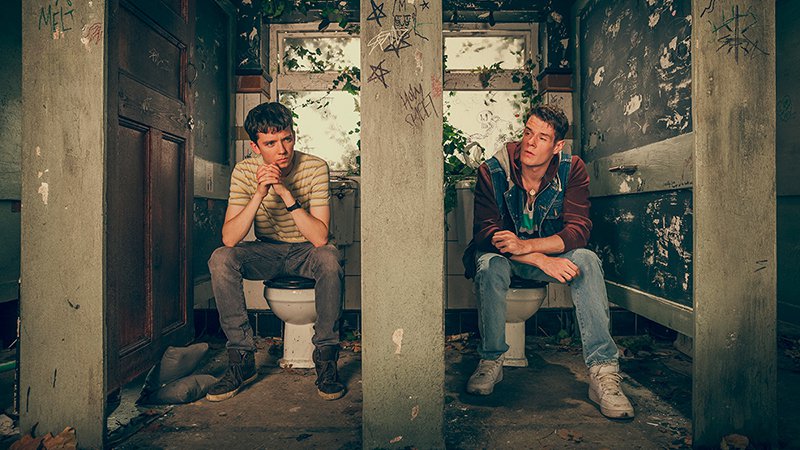Teenage Angst and ‘Sex Education’
January 28, 2019
Our best memories of puberty perhaps consist of fresh “ketchup” between our thighs or disobedient sprouts of hair in places they definitely weren’t before. Maybe, the most vivid of our memories is within the four walls of a middle school classroom along with twenty-plus equally-awkward peers anticipating conversations on, well, sex. Despite the stereotypical boldness of teenagers—think rebelliousness or the sudden crave for independence—Sex Education class brings about down-turned eyes and red-tinged cheeks.
Netflix’s “Sex Education” is a quirky spotlight on the angst of this teenage sex complex.
Starring Asa Butterfield as Otis, the son of a renowned sex therapist and author, “Sex Education” follows the events of the insecure Otis on his social, sexual and romantic journey at Moorhead, a high school somewhere in England. Obliviously following his fancies for the beautiful, edgy and intelligent Maeve, played by Emma Mackey, Otis becomes Moorhead’s sex-whisperer and relationship counselor. Every day and for a some of money, Otis holds confidential meetings with the individuals of Moorhead High, advising them how to lead their healthiest and most pleasurable sex lives. Ironically, however, Otis struggles to overcome his insecurities and his own inability to enjoy anything remotely sexual.
Given the trope-y elements of “the gay best friend,” high school hierarchy and teenage drama, “Sex Education” seems to be the typical American high school drama with the added appeal of English accents. To a much greater extent, however, the mere topic of this show, very literally sex education within a teenage environment, supersedes the expected cliché of the show.
On one hand, the overplayed clichés might be the reason that episodes are so entertaining, and there is also no doubt that “Sex Education” is written for a teenage audience. A strong female main character with untapped potential speaks towards topics of feminism, a closet-gay school bad-boy challenges stereotypes of sexuality, but “Sex Education” best highlights the unspoken stigma against sex by popularizing the importance of healthful sex. It’s no secret that sex is a largely unspoken act in teenage lives that is, frankly, considered dirty. Especially considering the social context of the Deep South, the more socially acceptable abstinence from sex is more agreeable than discussing safe sex.
One of the most powerful motives of creating art, cinematography included, is to trigger new conversation in a community. “Sex Education” does just that, by normalizing and highlighting discussions of sex and sexuality in popular culture. Furthermore, as Otis continues to counsel what turns out to be the entire school population, “Sex Education” also places emphasis on the physiological and social aspect of teenage sex education. No matter how cheesy the plot of “Sex Education,” the underlying concentration on the stigma of teenage sexuality is worth mentioning.









